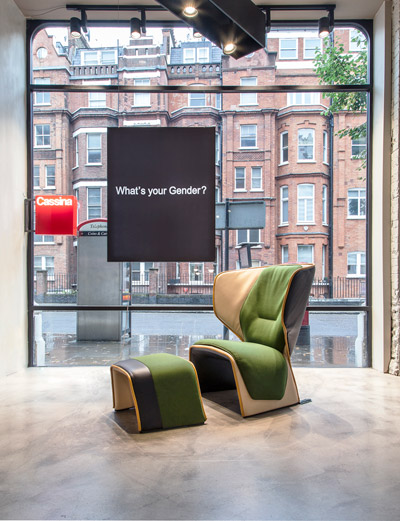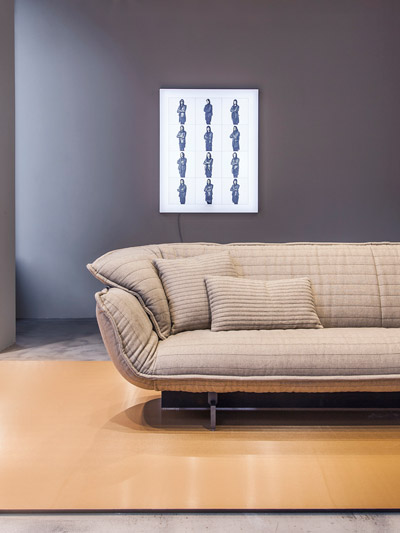|
|
||
|
Having recently opened a London office, the celebrated designer is working on her first project in the city. We spoke to her a year after she took on the role of creative director at Cassina ICON You’ve been creative director of Cassina for more than a year now. Has there been a conflict between your experimental approach and the classic designs of this old, established brand, which turned 90 this year? PATRICIA URQUIOLA I don’t think of it as ‘old’ – it’s an evergreen company with a 90-year history of experiments. In each period, it has caught a sense of that time and culture, working with contemporary designers with interesting narratives. When you’re 90 years old, there’s a long path behind you, but you can still be alive and energetic. ICON So, what is your vision for the company? And are there any specific designers you’re planning to work with? PU This year, we made Konstantin Grcic come back to do another collection. We are working with Bertjan Pot, who has an interesting sensibility and the kind of narrative I like. We are also doing something with Jaime Hayon, and two or three others. But my role is not only to be behind projects by other designers – it’s to be behind everything, from how we talk about Cassina’s archive to how we communicate the company’s legacy and connect with different people. Obviously, Cassina has a serious heritage, and we have to talk about that in a way that’s authentic. For example, we are doing a kind of cultural exhibition and book, which are a way to talk about both our legacy and our new products. As someone who is both inside and outside, I have the freedom and energy to discuss possibilities from a different point of view. The idea is to open up various arguments that are interesting today. For example, at our showroom during the London Design Festival we explored the idea of gender. We still have these simplified ideas and prejudices about gender, and Cassina has been connected with a lot of design masters who have tended to be men, which could make you think that it’s a masculine company. For LDF, I designed a chair for Cassina with the idea of ‘no gender’ – it’s a simplified armchair that can change its dress, with a mix of fabrics and materials. It’s an item that [illustrates] the idea that we have to open up the binary idea of men and women to a concept of gender multiplicity, which is more actual and more interesting.
The ‘What is Your Gender’ installation at the Cassina showroom in London, September 2016 ICON You’ve recently opened an office in London and are working on your first project in city – the public areas of a residential scheme on Lincoln Square. Tell me more. PU I liked the proposal. They could have just done a nice lobby, without thinking too much about it, but instead they wanted to design shared spaces – a pool, a cinema, a library, a dining space. I thought of it as an opportunity to experiment with a crossover between domesticity and public space. The spaces have a continuity – for example there is a metallic mesh screen that you’ll find in the lobby, as well as in parts of the ceiling, the pool and the library; the way we used wood, cement and fabric is also all connected. The idea of connections between the spaces was, for me, very important
Design for common areas of the Lincoln Square, a residential development planned for London ICON Why is that? PU Well, I disagree with the ‘wow factor’ – the element that gives you a big emotion or a strong, visual first impression. The first impression is important, but when we’re speaking about domesticity – and this applies equally to hotels, houses and offices – what is important is what stays in your emotional memory afterwards, when you use the space. In a good series of spaces, there is consistency: you can’t have one that’s really charming and another that’s a bit lost. For me, even corridors are important – in offices, many of the best meetings you have are in the corridor, so it’s as important as the meeting room. In this case, the pool, for example, is as important as the home cinema. We used consistent elements like little couches and armchairs, so if you go outside your apartment, you are still in a space designed in a domestic way.
Beam, Urquiola’s sofa system for Cassina ICON Who do you think about when you are designing – the user or yourself? PU It’s difficult to separate the two, because you put part of yourself [into your design] and you have to be confident in what you’re proposing – in the end, you’re the only client you know well. When I was working with Maddalena De Padova early in my professional life, she had many of the items she was selling through her company in her house. In the end I understood – she was trying to understand real life. With architecture, too, you always begin with the human being. ICON Do you have a lot of your own products in your house? PU Well my personal life is a bit bohemian – my home is not a gallery. I live above my studio and many of the prototypes finish up at home or sometimes things in our home end up downstairs. It’s a kind of ‘process house’. I think creative people in some way are collectors. Collectors are important because they’re the people who understand the cultural values of a period. Curiosity – this attitude of being experimental – is part of my life. Maddalena De Padova died on 3 December 2016, after this interview took place |
Words Debika Ray |
|
|
||























